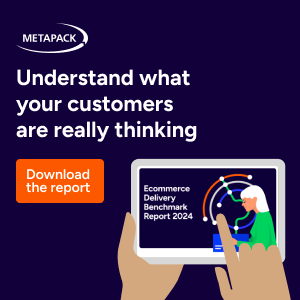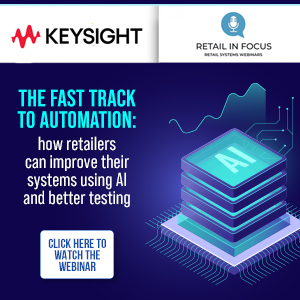Retail Systems catches up with Bryony Elliott, the co-founder of Hullabalook, to find out more about this retail technology startup that says it is putting “the disco back into product discovery”.
Can you give us a bit of background about Hullabalook? Who are you and what you do?
We help people to look through the hullabaloo of online products to find what they want to buy faster, and have a more fun shopping experience while they are doing it – that is why we named our company Hullabalook. We are a retail tech company started about 18 months ago by myself (Bryony Elliott) and Barny Darby. Barny and I found online shopping increasingly frustrating, it felt like all retailers were stocking more and more products, so when we were shopping it was harder and harder to find the item we wanted to purchase.
We realised that lots of other people felt the same way as us and that this struggle results in poor engagement and a loss of sales for retailers. The tools that retailers have traditionally used to help shoppers navigate – site search, filters, facets and navigation – haven’t seen any innovation since the birth of e-commerce 15 years ago. With Hullabalook we are changing this by revolutionising the way that shoppers discover products on retailer websites. We like to say that Hullabalook is putting the disco into product discovery.
Can you explain how your retail technology works?
We take retailer's data, we make it better and then we embed it back into their sites as visual discovery experiences, which makes you think filters were created in the dark ages!
We automatically import any data feed that retailers have, including affiliate and Google Shopping feeds. We analyse all of their product text descriptions and images so that we can: separate out information that is in unstructured description fields and turn it into structured data or tags; we find or create missing information by analysing photos and descriptions; and we standardise numeric information such as dimensions or weights.
This process makes retailer product data complete, enriched and fully flexible. The flexible data is then served back into the e-commerce site in any discovery experience you can dream up. For example, visual search, integration with Pinterest, colour palette matching and outfit building. The only limit is our collective imaginations.
You have been working with Made.com and John Lewis. How have you helped them and are you in talks with other major brands?
We’ve helped Made.com develop Sofasizer and Storagesizer – tools that enable shoppers to find the perfect size and colour sofas and storage on the Made.com site. The solutions have shown very significant impact on conversion and average order value, and we’ve even seen shoppers tweet about how much they enjoy using them – which is pretty amazing as people generally don’t tweet about how much they love using filters on websites!
We are also doing a range of work with John Lewis, which isn’t quite public yet – but is really exciting. Sorry to tease, but you will have to come back and ask us about that in a few months… In the UK we are also working with Mamas and Papas on a range of experiences to help shoppers purchase nursery furniture, baby clothes and accessories.
A lot of our other work is with non-UK based companies. One of the great things about the experiences that we build is that we try to make them highly visual and super intuitive for shoppers, which means that they really appeal to non-English speakers. We have worked with customers as far away as Indonesia, and with non-Latin scripts like the Cyrillic alphabet in Russia.
What have been the challenges getting to this stage?
My and Barny’s backgrounds are not in the retail sector; previously we’ve mostly built and sold software for large financial services organisations, so we’ve had a lot of retail lingo to pick up quickly! The first time someone used the term ‘mega-menu’ in a meeting I laughed as I thought it was a joke – thankfully everyone who works in retail seems to be very nice so I think I was eventually forgiven for that faux pas.
Is there anything you would do differently in hindsight?
See above answer – I probably wouldn’t have laughed at one of our clients…
Are you working on anything new at the moment? What is next for Hullabalook?
We are always working on new software at Hullabalook, we really are a collection of extraordinarily geeky people who just love software and data. We recently built a robot (called the Hullabot) that manages most of the operations of the company. We’ve also built a one-armed bandit style ‘gift finder’ that is operated by shaking your phone, and a trend outfit builder that will help you build your ideal statement sleeve, heritage, red, faux fur embellished outfit!
Latest News
-
Amazon to double sales of ‘Just Walk Out’ tech to third-party retailers
-
bp rolls out body cams to combat crime
-
Shein reportedly interested in acquiring Topshop from beleaguered Asos
-
Cost-of-living still ‘biggest’ concern for consumers, finds HSBC
-
Retail Systems' 2024 Payments Awards are now open for entry
-
Consumers shouldn’t be ‘misled’ by 12-month food inflation drop, say retail experts
The Very Group
Smarter merchandise planning across the retail value chain
In this webinar, Matt Hopkins, Head of Retail Solutions, Board, Catherine Tooke, SVP Product & Planning, Sweaty Betty, and Subir Gupta, Managing Principal, Thought Provoking Consulting join Retail Systems Editor Jonathan Easton to discuss the findings of the recent Retail Systems report The Merchandise Planning Challenge: How are retailers harnessing technology to optimise planning and retain customers? and examine the innovations that are improving retail planning.
© 2019 Perspective Publishing Privacy & Cookies















Recent Stories